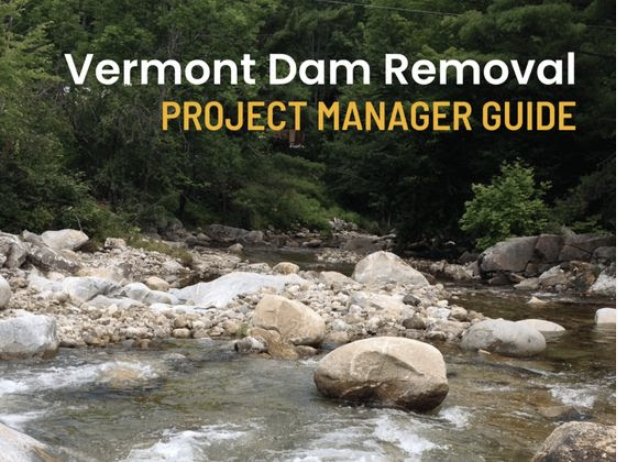Overview
Vermont has more than 800 known dams, and we estimate that hundreds of them may serve no useful purpose. Instead, they degrade water quality and aquatic habitat, restrict the movement of fish and other wildlife, drive up costs in maintenance and liability, and pose significant risks to public safety. Since 1996, upwards of 30 unused dams have been removed from Vermont’s rivers and streams to improve public safety and benefit the environment. Many of these dams were privately owned.
VNRC is a founding member of FreeVTRivers, a group of river and fish biologists, anglers, community members, freshwater advocates and conservation organizations who would like to see our rivers restored and reconnected to support thriving fish populations, improved recreational access, and a river’s natural capacity to handle flooding. To get there, we facilitate dam removals across the state.
Dam removal at a Glance
Below, we have outlined the many benefits of dam removal and the downsides of maintaining unwanted dams.
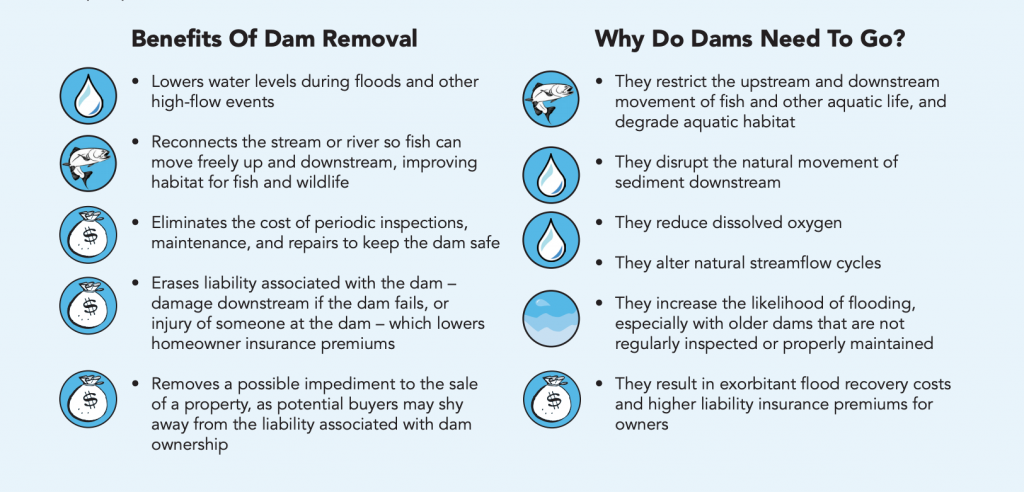
Mill Pond Dam removal (2019)
In November 2019, VNRC completed its work to remove Mill Pond Dam on Indian Brook in Colchester. Indian Brook will gradually be restored to a free-flowing stream, to the benefit of aquatic ecosystem and public safety. This video shows the removal process and highlights the dam owner’s motivations for wanting to have the dam taken out.
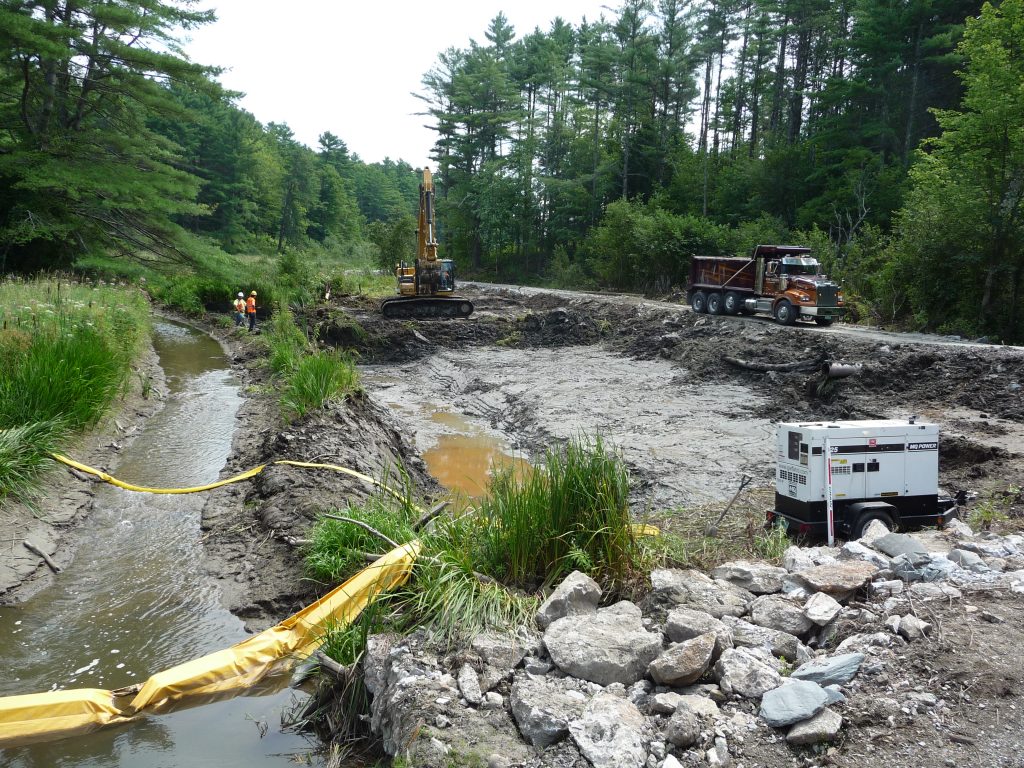
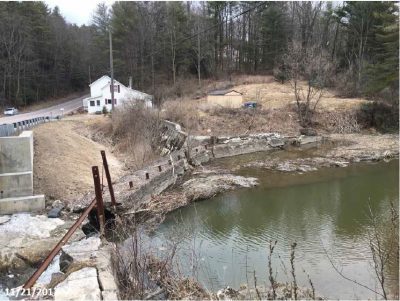
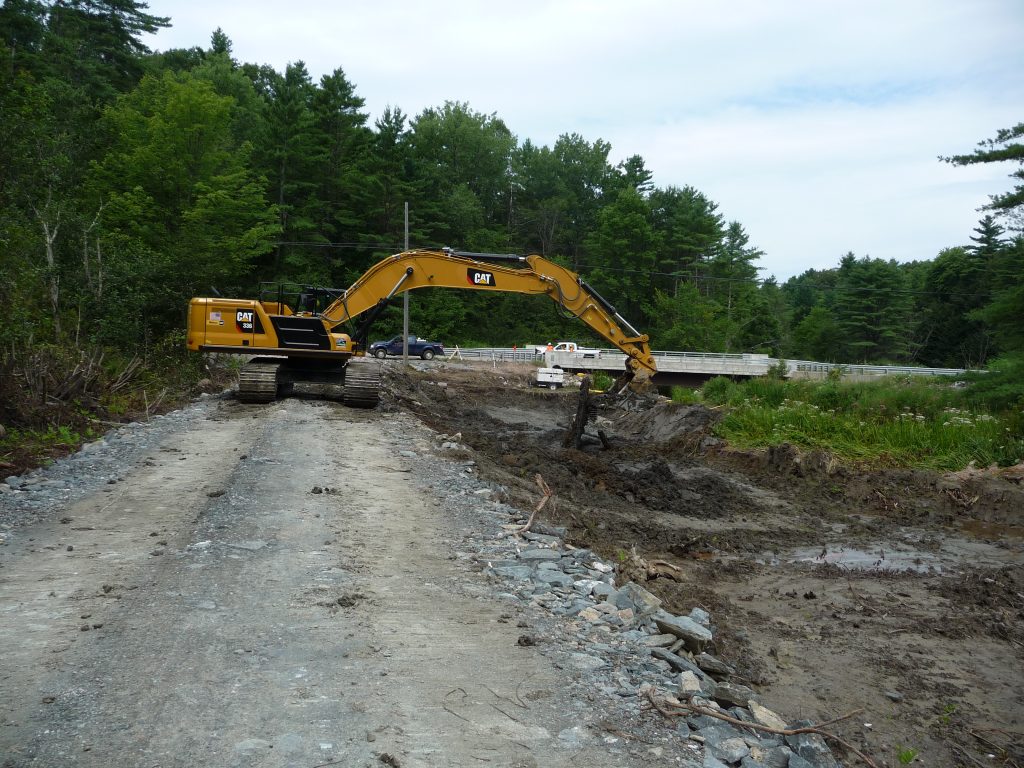
VNRC, with support and assistance from partners including the U.S. Fish & Wildlife Service and The Nature Conservancy, broke ground in August 2019 on the removal of Mill Pond Dam on Indian Brook in Colchester, which had not served a purpose since the last mill it powered burned down in 1941.
The deteriorating dam was classified by the state Dam Safety Program as a “significant hazard,” meaning there is potential for loss of life and “appreciable” economic loss should the dam fail. In addition to eliminating 2,200 feet of free-flowing riverine habitat, the dam’s impoundment had filled in the former mill pond with an estimated 17 tons of phosphorus. Phosphorus contributes to algae blooms and excessive aquatic plant growth in Lake Champlain that degrade water quality, harm fish and wildlife, and limit recreational use of the lake.
The dam removal project reconnected 31 miles of stream, bringing Indian Brook closer to its natural free-flowing state and restoring habitat for a diverse aquatic habitat. Read more about the 2019 completion here.
In spring 2020, after a huge fall 2019 storm event — as is typical for this type of project — the dam removal needed some buttoning-up. We want to give this project the best recipe for ecological success, so we planned a spring clean-up to support natural biodiversity, channel evolution, and sinuosity. Although native plants from the adjacent seed supply were already knee high, some bare patches needed some additional growth. So we added some seed species and spread locally sourced woody shrubs, and herbaceous seeds. Learn more here.
Find all updates about dam removal projects here.
Dam Safety Bill
In 2018, VNRC led a coalition of advocates for H.554, a bill addressing dam safety and drinking water protection. H.554 requires the Department of Environmental Conservation (DEC) to maintain an inventory of all known dams in Vermont (there are 820, 696 of which are under DEC jurisdiction) and inspect them under DEC jurisdiction on a regular, risk-based schedule. The bill benefits public safety by requiring inspection, and if needed, maintenance or removal of dams that have been largely ignored.
VNRC worked closely, and persistently, with key legislators on language and testimony to help push H.554 to passage. It took multiple bills in multiple sessions to get the final version through, not to mention close work with DEC on compromise language.
The passage of H.554 saw the culmination of over a decade of VNRC advocacy for the testing of new wells for certain toxic pollutants. The bill includes a requirement to test new wells, driven by the urgency of finding the toxic substance PFOA in Bennington wells. This drinking water protection provision was originally passed as part of S.103, a toxic regulation bill VNRC supported, but vetoed by Governor Phil Scott earlier in the 2017-18 Legislative session.

Are you a dam owner interested in removing a dam on your property?
Read more here about how organizations like VNRC can help you make it happen. Plus, find FAQs about dams and dam removal — and how you can take the first step to a free-flowing river on your property.
Vermont Dam Removal Project Management Guide
The Vermont Dam Task Force and partners have developed the “Vermont Dam Removal Project Management Guide.” Now available, for free download, this guide is a set of resources for anyone involved in dam removal projects, including project managers, engineers, contractors, community members, and more.
